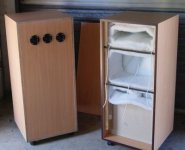Never seen that before, it looks very KEF like. My woofers are the earlier b139 the racetrack types, dates from 1967 and my tweeters are scanspeak D2006 I think. Have had these for many years and yes they are very warm sounding. I think warm is typical of the old British speakers. The boxes are massive and beside Isobaric there is a transmission line behind them. They will rattle the rooftiles, like the dog jumped on your chest.Hi Nico,
WTH is this. I just brought home this one, it is far less analytical than my usual speakers, bu it is soo warm and good to my ears. What are those?
View attachment 1337084
Attachments
Last edited:
I also have b200 for 30years, as new, but these I bought with very small crack, or it was externally injured, so nothing to do anymore except repair...
Simplified physics of an isobaric system compared to a single driver system.

Simplified physics of an isobaric system compared to a single driver system.
View attachment 1337852
To add to the above, for a given input voltage if the two drivers are connected electrically in parallel in phase then the response will be the same as that for the single driver system. If the two drivers are connected electrically in series in phase then the response will be 6 dB lower.
In the chart below, the black trace shows the parallel connection response and the grey trace shows the series connection response.
Last edited:
https://speakerrepairshop.nl/en/rub...r-surround-for-kef-b110-woofers/a-99-10000027For the moment, do you know where is the best to get rubber suspensions got B110? On one speaker there is small crack in rubber, not significant but I like to restore those .
Now that we all understand that, can we go back to your point of second order distortion going down and third order possibly going up? I understand the second order going down due to cancellation of noise from back to back or front to front arrangements, but how does the third order distortion go up?Very nice illustartion John. Really gets the point across.
dave
What is purpose on the gap on front panel sides? Is front panel glued or not to the rest of the box?Work progresses again...
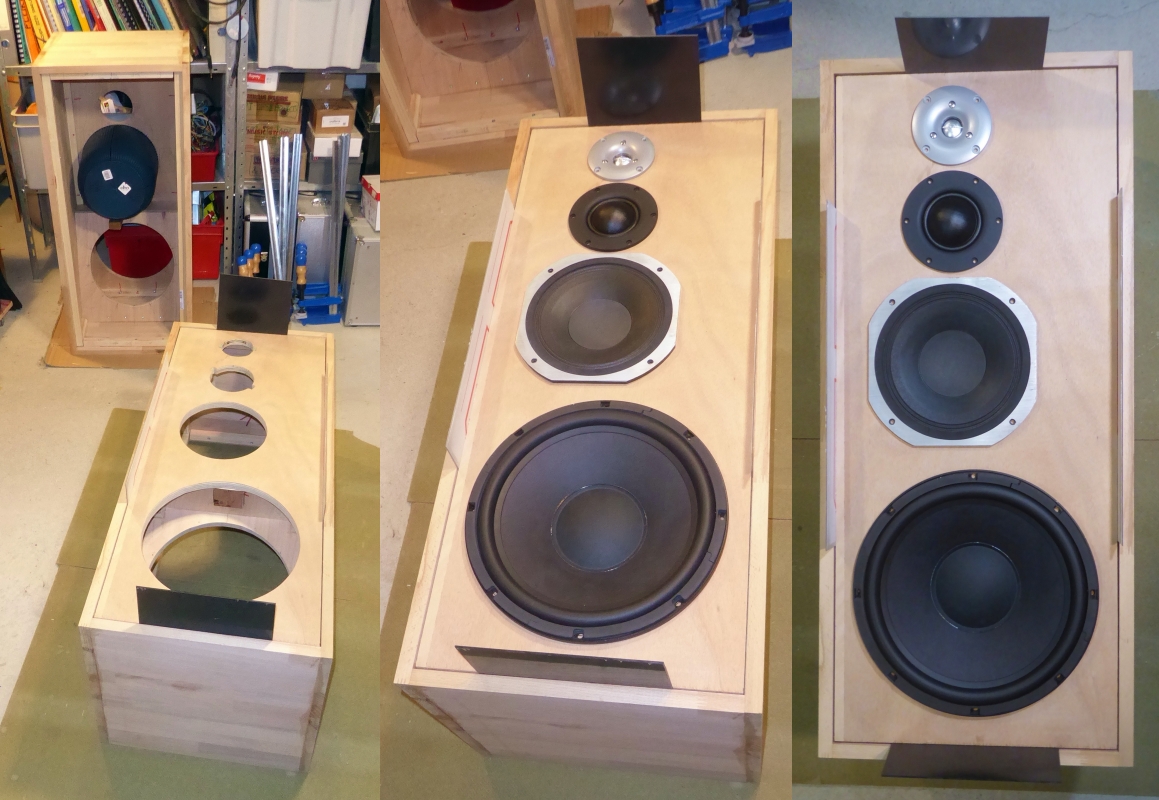
T
What is purpose on the gap on front panel sides? Is front panel glued or not to the rest of the box?
Yes. The Gap is 2mm all around, for the front face and the rear face. Here's the construction of my 3-ways 375L :
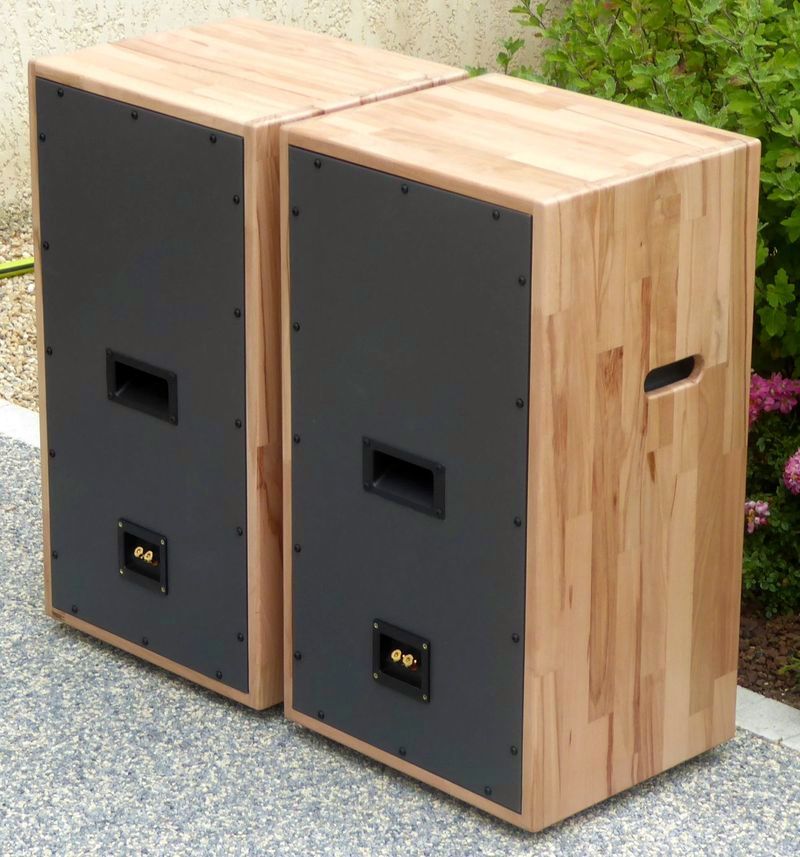
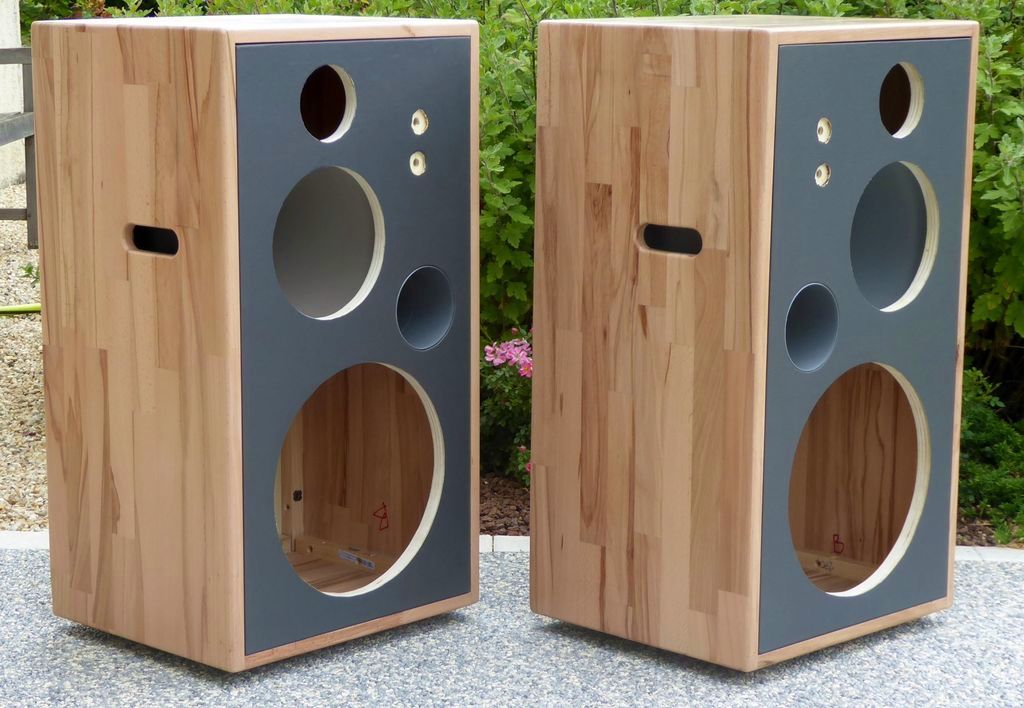
Those front and rear faces are removable, screwed on the surround bracing with a flat gasket, and are previously covered with Simili (Leather imitation) :
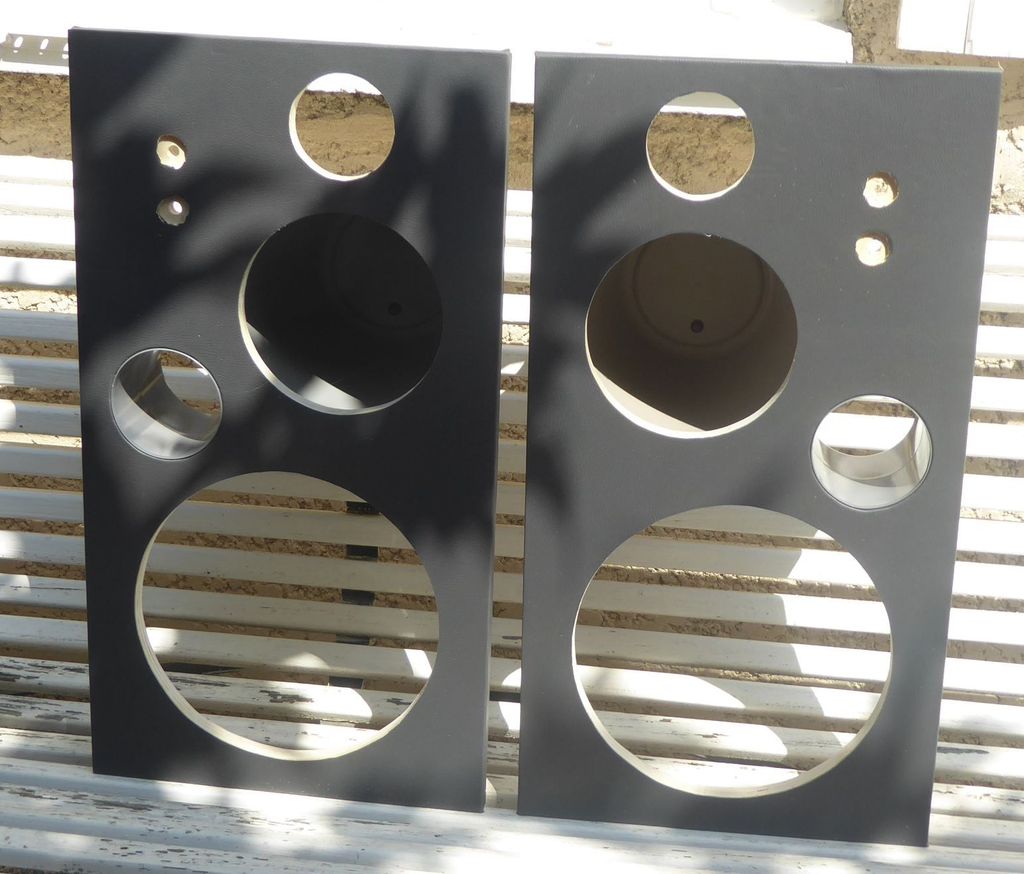
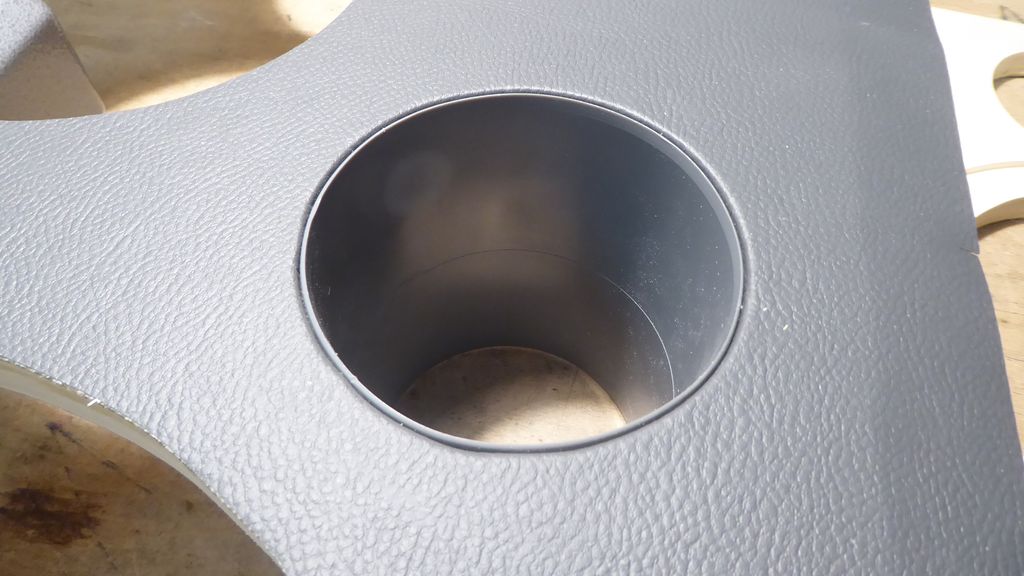
T
really nice work!
One possibility of getting maybe a decibel more efficiency with two isobaric bass drivers without pole piece ventilation on the magnets is putting them close with the magnets touching each other exactly.
They behave then like added double magnet vice versa.
Only drawback is exact work in millimeters bringing them close together without damage as you do not want to glue them together what you would do usually with a double magnet.
One possibility of getting maybe a decibel more efficiency with two isobaric bass drivers without pole piece ventilation on the magnets is putting them close with the magnets touching each other exactly.
They behave then like added double magnet vice versa.
Only drawback is exact work in millimeters bringing them close together without damage as you do not want to glue them together what you would do usually with a double magnet.
Last edited by a moderator:
OK I did some reading, and thinking when I should have been sleeping. 2nd order distortion is harmonic distortion it is at integer multiples (good for guitar overdrive), both drivers should make very similar levels of 2nd order harmonics. 3rd order is non-linear and composed of frequencies that are not harmonic and added or subtracted from the fundamental frequency (good for guitar fuzz). So if 2nd order largely disappears, then 3rd order can be the loudest distortion component. Also, 3rd order distortion from the inside woofer will pass through the outside woofer adding to its 3rd order distortion and thereby increase the total 3rd order distortion. This is more distortion than a single driver speaker but wouldn’t it be the same as any two woofer system? I’m thinking not, or line sources would have tremendous levels of 3rd order distortion. What am I missing?Now that we all understand that, can we go back to your point of second order distortion going down and third order possibly going up? I understand the second order going down due to cancellation of noise from back to back or front to front arrangements, but how does the third order distortion go up?
third order distortion can come down, too?
If the drivers are mounted linkwitz alike compensating nonlinearities of the suspensions.
Did anyone measure that this arrangement only helps second order distortion behaviour?
Or is this statement derived only from theory?
If the drivers are mounted linkwitz alike compensating nonlinearities of the suspensions.
Did anyone measure that this arrangement only helps second order distortion behaviour?
Or is this statement derived only from theory?
really nice work!
One possibility of getting maybe a decibel more efficiency with two isobaric bass drivers without pole piece ventilation on the magnets is putting them close with the magnets touching each other exactly.
They behave then like added double magnet vice versa.
Only drawback is exact work in millimeters bringing them close together without damage as you do not want to glue them together what you would do usually with a double magnet.
Thanks Freedom666 !
Yes, I studied 3 variants of the Isobaric principle, in the imparted dimensions of the cabinet :
I finally went for the "Slanted" option...
- In the "Straight" version, the chamber volume can be minimal, but free air circulation between the two speakers is not really satisfactory.
- In the "Magnet to Magnet", the chamber volume is notably increased, and I did not like too much a speaker face looking the back panel at short distance.
The "Slanted" is the compromise between sufficient back distance, reduced volume chamber and adequate free air circulation, plus offering a non-parallel internal baffle, which can't be bad for reflections...
T
i read that - but you can easily reduce volume between the drivers with some wood pieces glued at some places.
- Home
- Loudspeakers
- Multi-Way
- ISOBARIC sealed enclosure... Any experiences? Any advantages?
